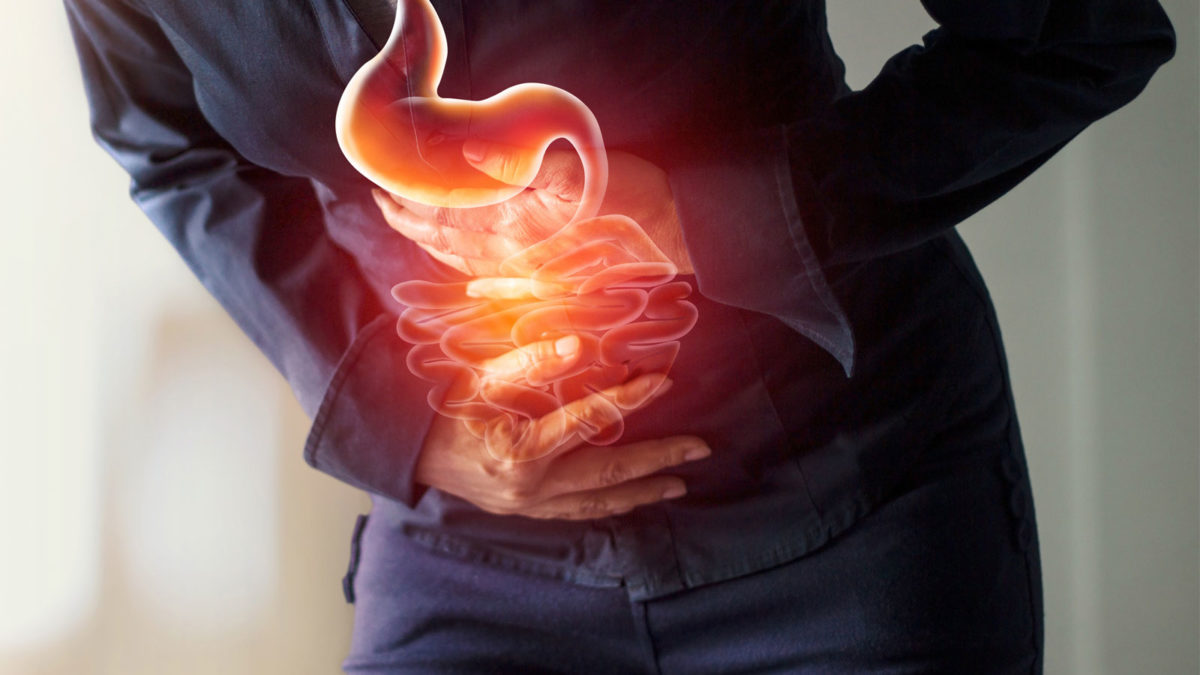Do You Have Low Stomach Acid? (1 Easy Way to Tell)
You may have heard the adage that, “You are what you eat.” But the truth is… you are what you absorb.
If your digestive system is not functioning properly and nutrients are not being absorbed, your body could be in a state of starvation and nutrient deficiency… even as you consume healthy, nutrient-dense foods and take expensive supplements.
Unfortunately, many of us are not able to fully absorb the precious nutrients contained in our food. And one of the primary reasons for this is low stomach acid. Fortunately this is a condition that’s easy to remedy, in most cases.
Low Stomach Acid: An Overlooked Cause of Disease & Deficiency
Hypochlorhydria, or low stomach acid, is linked to a wide variety of common digestive symptoms, including bloating, constipation, gas, nausea, heartburn and acid reflux. It’s also correlated with gastrointestinal diseases, including IBS and Crohn’s.
But inadequate stomach acid doesn’t just affect the GI tract. It can also cause a range of systemic effects including:
- Acne
- Vertical ridging on the nails
- Foot and leg cramps (due to malabsorption of mineral)
- Leaky gut, food allergies and intolerances
- Asthma
- Autoimmune diseases and chronic fatigue
- Low bone mineral density/osteoporosis
- Increased risk for cancer and cognitive decline
The Importance of Stomach Acid
You might think of stomach acid (or HCL) simply as the acidic “soup” that helps to break down food. However, its role goes much deeper than that. Stomach acid is also needed to:
- Liberate and Absorb Key Nutrients: HCL is required to properly absorb numerous essential nutrients including iron, copper, zinc, calcium, vitamin B9, vitamin B12, folate, vitamins A, C & E. These nutrients have a wide range of disease-preventing and health-promoting effects.
- Guard Against Pathogens & Promote Healthy Gut Flora: Food borne bacteria and pathogens are typically killed by HCL. Hypochloridia allows some harmful organisms to make their way into the intestines, causing a wide range of issues. Adequate stomach acid is also important to prevent bacterial overgrowth that can occur when food ferments in the stomach for too long.
- Keep Food Where it Belongs: When stomach acid is low, starches are improperly digested. These starch fragments can create microscopic holes in the cells that line the intestine – or a “leaky gut”. As undigested food particles leak out of the intestine into the bloodstream, the immune system reacts, causing issues ranging from allergies and asthma to autoimmune disease, chronic inflammation and depression.
- Breakdown Protein, Build Muscle & Boost Mood: HCL is required to activate pepsin – an enzyme responsible for protein digestion. As proteins are broken down into amino acids, they are used throughout the body for a wide variety of purposes including creating neurotransmitters and repairing tissue. Without adequate HCL, mood disorders and depression can develop and slow healing or poor recovery from exercise can occur.
What Causes Low Stomach Acid?
Unfortunately, many people respond to the digestive effects of low stomach acid by taking antacids. What’s worse, doctors often misdiagnose hypochloridia (low HCL) as hyperchloridia (high HCL) and prescribe medications (Nexium, Prilosec, Prevacid, Pepcid, Zantac, etc) that further lower HCL levels, making the problem even worse.
In addition to antacids and other medications, low stomach acid can be caused by:
- Age: Your ability to produce HCL decreases by about one percent each year.
- Stress: High levels of stress (and stress hormones like cortisol) can reduce the stomach’s ability to produce HCL.
- Chemicals: A variety of common chemicals – including food additives and pesticides – can impair HCL levels
Testing HCL Levels and Correcting Imbalances with Betaine HCL
If you have peptic ulcers or take NSAIDS or corticosteroids, talk with your doctor about checking your stomach acid levels. The Heidelberg Stomach Acid Test is considered the “gold standard” and provides very accurate results.
If you don’t have ulcers and are not taking NSAIDS or corticosteroids, you can do the Betaine HCL Challenge Test at home by following these steps:
- Buy betaine HCL with pepsin (aim for 650 mg betaine or less)
- Eat a high protein meal containing at least 6 ounces of grass-fed beef, bison, lamb or pastured pork, preferably in steak form – not ground (which is more easily digested)
- Take 1 betaine HCL pill during your meal
If you don’t notice anything after taking the betaine, you likely have low stomach acid levels.
If you notice a sensation of burning, heaviness or stomach distress, these are signs you do not have low HCL. (Note: To ease the burning, you may drink a glass of water with ½ tsp. of baking soda. The sensation will pass in about an hour on its own).
Be sure to repeat the test on a separate day to get a confirmation. Once you have two positive results (low stomach acids), begin supplementing with betaine to optimize your HCL levels.
You can determine your proper dosage with a “loading” phase. At your first meal, take one betaine HCL and monitor your reaction. If you experienced nothing, at your next meal, take two betaine HCLs (watching for the warming sensation). Repeat this process until you feel the warming. Your correct dose should be the amount before you experienced the sensation. For example, if you felt the sensation at 4 pills, 3 pills is your proper dosage.
In addition to boosting your digestion (and absorption) of nutrients with betaine HCL, it is also beneficial to drink a small amount of bone broth with meals to stimulate gastric juices and boost nutrient levels.
And keep the water you drink during and shortly after meals to a minimum. Too much liquid during a meal dilutes HCL and digestive enzymes. Finally, be sure to eat slowly and chew your food well to reduce the stomach’s burden. Not only will you absorb the most nutrition – you’ll also get the most enjoyment – out of every meal!





Leave a Reply